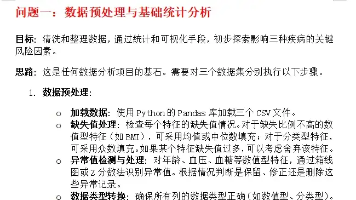自动化测试工具Cucumber的简单介绍
随着测试的发展,测试自动化越来越成为人们的关注点。现在我们公司也在进行接口自动化的推广,在我看来接口自动化的价值就在于整体项目的回归,完成一些没法通过人力进行的测试,比如压力测试。为了解决测试开发人员和功能测试人员的同步问题,选择了Cucumber框架。Cucumber是一个能够理解用普通语言描述测试用例的行为驱动开发(BDD)的自动化测试工具。换句话说就是学习成本比较低,并且可以方便测试开发人员
背景介绍
随着测试的发展,测试自动化越来越成为人们的关注点。
现在我们公司也在进行接口自动化的推广,在我看来接口自动化的价值就在于整体项目的回归,完成一些没法通过人力进行的测试,比如压力测试。
为了解决测试开发人员和功能测试人员的同步问题,选择了Cucumber框架。
Cucumber是一个能够理解用普通语言描述测试用例的行为驱动开发(BDD)的自动化测试工具。
换句话说就是学习成本比较低,并且可以方便测试开发人员和功能测试人员协同合作、开发人员进行公共方法的封装、功能测试人员进行测试用例的编写。
Cucumber组成
由Features、Step_definitions、Cucumber command组成。
Features
基于Gherkin,支持语言:# language: en (zh-CN)等;
Features文件必须以.features命名;
包含title,多个scenarios,每个scenario包含多个step。
示例如下:多组参数传参。
-
Features: test //Features关键字,测试用例集 -
Scenario Outline: eating //Scenario Outline关键字,测数用例 -
Given there are <start> cucumbers //Given关键字,进行接口请求 -
When I eat <eat> cucumbers //When关键字,数据准备 -
Then I should have <left> cucumbers //Then关键字 -
Examples: -
| start | eat | left | -
| 12 | 5 | 7 | -
| 20 | 5 | 15 |
关键字详解:
- Feature (功能):test suite (测试用例集)。
- Scenario(情景):test case (测试用例)。
- Scenario Outline (or Scenario Template):和examples更配。
- Given(给定:setup(创建测试所需环境)。
- When(当):test(触发被测事件)。
- Then(则):assert(断言,验证结果)。
- Background(背景):您会发现自己在一个功能的所有场景中重复相同的给定步骤,因为它在每个场景中都是重复的。
这表明这些步骤对于描述场景不是必需的,它们是附带的细节。您可以通过将这些给定的步骤分组到background部分,将它们移动到后台。
- And(or But):如果你有连续的“给定”、“何时”或“然后”。
- “”"(定义多行字符串):方便地将较大的文本段传递给步骤定义。
- |(用来定义表格):数据表便于将值列表传递给步骤定义。
Step_definitions
Step定义必须以关键字Given、When、Then、And开始,根据正则匹配对应的关键字。
根据feature文件中定义的step编写对应的测试代码。
示例如下:
-
public class StepDefinition { -
private String today; -
private String actualAnswer; -
@Given("^today is Sunday$") //和features中的Given对应 -
public void today_is_Sunday() { -
today = "Sunday"; -
} -
@When("^I ask whether it's Friday yet$") //和features中的When对应 -
public void i_ask_whether_is_s_Friday_yet() { -
actualAnswer = IsItFriday.isItFriday(today); -
} -
@Then("^I should be told \"([^\"]*)\"$") //和features中的Then对应 -
public void i_should_be_told(String expectedAnswer) { -
assertEquals(expectedAnswer, actualAnswer); -
} -
}
Cucumber command
运行*.feature文件,Cucumber会分析feature文件中定义的step,然后去step -definitions寻找相匹配的step,执行step中的代码。
运行结果以html的形式保存,fail的情况查看对应log日志。
Cucumber开发过程
1.首先使用Cucumber原型Maven插件创建一个新的项目目录。
mvn archetype:generate -DarchetypeGroupId=io.cucumber -DarchetypeArtifactId=cucumber-archetype -DarchetypeVersion=6.10.4 -DgroupId=hellocucumber -DartifactId=hellocucumber -Dpackage=hellocucumber -Dversion=1.0.0-SNAPSHOT -DinteractiveMode=false
项目目录如下:

2、在reources文件夹下,创建feature文件,包括feature、scenarios和step。
-
Feature: Is it Friday yet? //Features关键字,测试用例集 -
Scenario: Sunday isn't Friday //Scenario Outline关键字,测试用例 -
Given today is Sunday //Given关键字,进行接口请求 -
When I ask whether it's Friday yet //When关键字,数据准备 -
Then I should be told "Nope" //Then关键字
3.在hellocucumber文件下创建step_definitions。
-
package hellocucumber; -
import io.cucumber.java.en.Given; -
import io.cucumber.java.en.Then; -
import io.cucumber.java.en.When; -
import static org.junit.Assert.*; -
class IsItFriday { -
static String isItFriday(String today) { -
return "Nope"; -
} -
} -
public class StepDefinition { -
private String today; -
private String actualAnswer; -
@Given("^today is Sunday$") //和features中的Given对应 -
public void today_is_Sunday() { -
today = "Sunday"; -
} -
@When("^I ask whether it's Friday yet$") //和features中的When对应 -
public void i_ask_whether_is_s_Friday_yet() { -
actualAnswer = IsItFriday.isItFriday(today); -
} -
@Then("^I should be told \"([^\"]*)\"$") //和features中的Then对应 -
public void i_should_be_told(String expectedAnswer) { -
assertEquals(expectedAnswer, actualAnswer); -
} -
}
4.项目运行,在idea中直接运行hellocucumber文件夹下的Runcucumber.java文件即可。
-
import io.cucumber.junit.Cucumber; -
import io.cucumber.junit.CucumberOptions; -
import org.junit.runner.RunWith; -
@RunWith(Cucumber.class) -
@CucumberOptions(plugin = {"pretty"}) -
public class RunCucumberTest { -
}
测试用例设计
测试用例设计时按接口文档给的标准生成数据,然后填充到如下图的examples中即可,框架会循环进行执行测试用例,生成测试结果。
-
Features: test //Features关键字,测试用例集 -
Scenario Outline: eating //Scenario Outline关键字,测试用例 -
Given there are <start> cucumbers //Given关键字,进行接口请求 -
When I eat <eat> cucumbers //When关键字,数据准备 -
Then I should have <left> cucumbers //Then关键字 -
Examples: //Examples关键字 -
| start | eat | left | -
| 12 | 5 | 7 | -
| 20 | 5 | 15 |
后期维护
后续迭代版本功能测试人员和测试开发人员分工进行,功能测试人员维护Features,也就是测试用例。
测试开发人员进行step_definitions的维护,就是一些代码逻辑和公共方法,最重要的也就是断言方法的改动比较大,接口请求就几乎是格式化的东西。
项目框架定制思路
1.测试前数据准备:类似于登录后获取请求头这种在里面进行实现。
2.测试用例数据:Features文件中存放。
3.逻辑处理,接口请求:封装到Step_definitions。
4.公共工具封装:一些数据库连接,yaml文件读取或者一些其他工具的存放地点。
5.框架配置信息:环境相关信息放置位置,不同城市、不同数据库、不同账号的切换在里面进行设置。
6.测试报告存放位置:用于测试报告的存放,接口文档的存放。
感谢每一个认真阅读我文章的人,礼尚往来总是要有的,虽然不是什么很值钱的东西,如果你用得到的话可以直接拿走:

这些资料,对于【软件测试】的朋友来说应该是最全面最完整的备战仓库,这个仓库也陪伴上万个测试工程师们走过最艰难的路程,希望也能帮助到你!有需要的小伙伴可以点击下方小卡片领取

更多推荐
 已为社区贡献11条内容
已为社区贡献11条内容







所有评论(0)